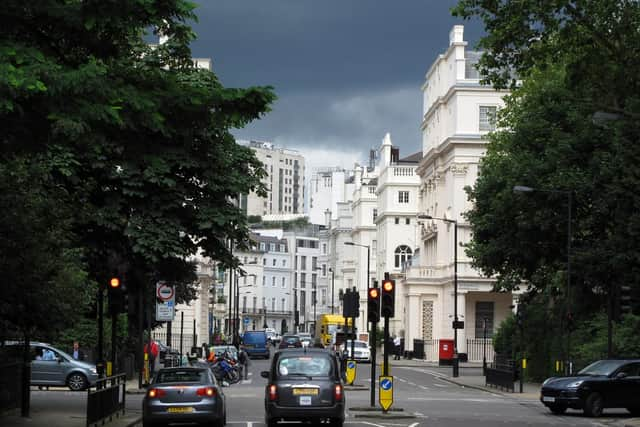The most common driving test mistakes and how to avoid them


After several months where driving tests were put on hold, the situation for learner drivers is slowly beginning to get back to normal.
Driving lessons are now permitted and theory testing has resumed around the UK. Practical driving tests have also started up again in England, with Wales set to restart them in coming days.
Advertisement
Hide AdAdvertisement
Hide AdDuring lockdown, 400,000 practical tests were cancelled and the DVSA is now in the process of rearranging them all, giving learners time to brush up on their skills.
Since fewer than half of candidates (45.9 per cent) manage to pass, that’s probably a good thing.
While the pass rate for 2019 represents a tiny improvement (0.1 per cent) on 2018, official data shows that the same common errors catch out candidates year after year, with observation and control among the biggest issues.
To help learners spot these mistakes Collingwood Insurance analysed the DVSA data on the most common reasons for failing a driving test. Here are the five most common errors, along with advice on how to avoid them.
1. Junctions – observation
Advertisement
Hide AdAdvertisement
Hide AdProper observation is key to a successful driving test and a safe driving career. According to government figures, 39 per cent of all accidents in Great Britain in 2017 were caused by a driver failing to look properly and it was a contributing factor in 35,993 accidents in that year.
The stakes are high, so it’s no wonder that your driving examiner will be closely watching for your every observation and check, especially when approaching a junction. To avoid making this mistake, approach each junction or roundabout at a safe speed, and be confident that you can judge the speed and distance of oncoming traffic. You need to make sure that your observations are just as strong in challenging weather conditions and poor light, as well as being watchful of other vehicles, including bikes and motorbikes.


2. Mirrors – change direction
Not checking your mirror before changing direction, overtaking, or changing lanes was found to be the second most common driving test mistake. Mirror checks are absolutely crucial and should become a compulsive habit when driving.
Before changing direction, moving off, slowing down, turning, or overtaking, you must check your mirrors and make sure that other road users are aware of your intentions and have time to react. Avoid making this classic mistake on your test by ensuring that you check your rear-view and appropriate side-view mirror every time you are ready to alter your direction.
3. Control – steering
Advertisement
Hide AdAdvertisement
Hide AdThe key to avoiding failing your test due to a steering fault is about making sure you always stay in your lane and retain full control over the car — regardless of the weather conditions. The best way to do this is by making sure you follow the kerb, but never veer too close to it, knock, or mount it —this will be marked as a major fault in your test and result in an automatic fail.
4. Junctions – turning right
Turning right at a junction can be a particularly nerve-wracking manoeuvre for many learner drivers.
As well as observing the speed and distance of the oncoming traffic and judging your timingperfectly, you will also need to master the turn itself and position your vehicle so that it doesn’t cut the corner.
This manoeuvre can be particularly dangerous, so be sure to stay vigilant and only take the turn when you are fully confident that the road is clear and it is safe to do so.
5. Move off – safely
Advertisement
Hide AdAdvertisement
Hide AdIn order to pass your test, you need to prove to the examiner that you can move off safely, on both level and sloped services. A single stall won’t result in instant failure, but you’ll certainly be in trouble if you stall regularly.
In order to avoid this mistake, don’t rush, make sure that you’re in first gear, gently put pressure on the accelerator and lift pressure from the clutch until you find the bite, slowly release the handbrake while putting more pressure on the accelerator, then gradually lift all pressure from the clutch as you keep your right foot steady on the accelerator.